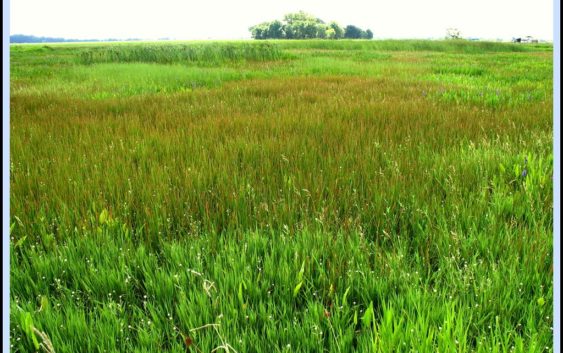- Hays County judge says software glitch caused some communication issues during wildfires
- FEMA deadline for Hurricane Helene recovery aid to governments, nonprofits extended
- Sellers and Rantanen are among the NHL trade deadline winners. Hurricanes and Boeser are some losers
- Hurricane forecasters express concern over NOAA job cuts impact
- FEMA deadline for Hurricane Helene recovery aid extended again
Hurricane Harvey reinforced the value of a pristine Katy Prairie. Development continues anyway.

Prairies are like sponges. When it rains, droplets get sucked underground and into the eager roots of grasses and flowers. When the soil gets saturated, their dense shoots slow the water’s flow downstream – making them a natural flood deterrent.
Prairies are the kind of natural resource that a place like Houston could really benefit from. But the vast prairie west of the Bayou City is shrinking. Development such as housing and roadways have eaten into the Katy Prairie for decades – including in the wake of Hurricane Harvey.
Jen Rice, Harris County reporter for the Houston Chronicle, spoke to Texas Standard about the effects of that continued development.
This transcript has been edited lightly for clarity:
Texas Standard: Where is the Katy Prairie located, and what’s it like out there?
Jen Rice: Yeah, this is an area in northwest Harris County. So if you drive like 30 miles west of downtown Houston, that’s the area we’re talking about. It’s right along I-10. And it used to be just, you know, you would look around and see flat, wild prairieland everywhere. And I did the drive recently, kind of looked around. And what you’re seeing now is master planned communities going up in every direction.
Is there a way to quantify how much development there’s been in recent years?
Yes, there is. For our story, we did an analysis and found that between 2001 and 2019, 60,000 acres had changed from having no pavement to having some amount of development.
Well, what about since Hurricane Harvey? I know that a lot of officials were saying we need to protect this prairie to soak up some of that water, because, you know, these storms are getting more severe and frequent.
That’s right. In Harvey, you know, we saw this flooding occur around the Addicks Reservoir area. And, you know, part of the reason for that flooding from the Addicks Reservoir was because so much development has occurred upstream of that. And everything we’re talking about right now with the Katy Prairie, all of the master planned communities that are going in there, that’s exactly the area that we’re talking about. So our former Harris County Judge Ed Emmett, he said right after Harvey, you know, we really need to stop development in this area completely and just set a new tone, start a new approach. And that hasn’t happened.
There’s some question about ongoing development there and whether or not it qualifies as building in a floodplain. Could you say more?
Yes. I find this really interesting. There’s sort of like a linguistic debate here where when you talk with the county, they say we don’t allow any new development in the 100-year floodplain. That’s not happening. But what they mean by that is that these houses are being built up higher. They’re using filled dirt to build the houses up higher. And then they’re saying they’re no longer in the floodplain.
As time moves on, how likely is it that some of the Katy Prairie’s previous acreage could perhaps be restored, or is there a push in that direction?
Yes, there is a very active land trust in the area, the Coastal Prairie Conservancy. And they’ve been working this area for decades, you know, grabbing 1,000 acres here, 500 acres here, and they’ve acquired around 30,000 acres now. And so that’s the pristine prairie that you can still see there. And they’re very open to the public as well, so it’s a place people can visit.
To what extent are you seeing pushback against ongoing development? You mentioned this group that’s been buying up acreage, but have there been lawsuits filed? Is there a discussion within the community about the need to reduce development in this region?
There certainly is a past of litigation in this area. In 2011, there was a big lawsuit from the Sierra Club saying if you’re going to build this new Grand Parkway project and expand the freeway here, there’s going to be all this new development and you’re not taking that into consideration. However, the Grand Parkway was built. So I would say that the litigation hasn’t really stopped the development from occurring, but it’s created a conversation about it.